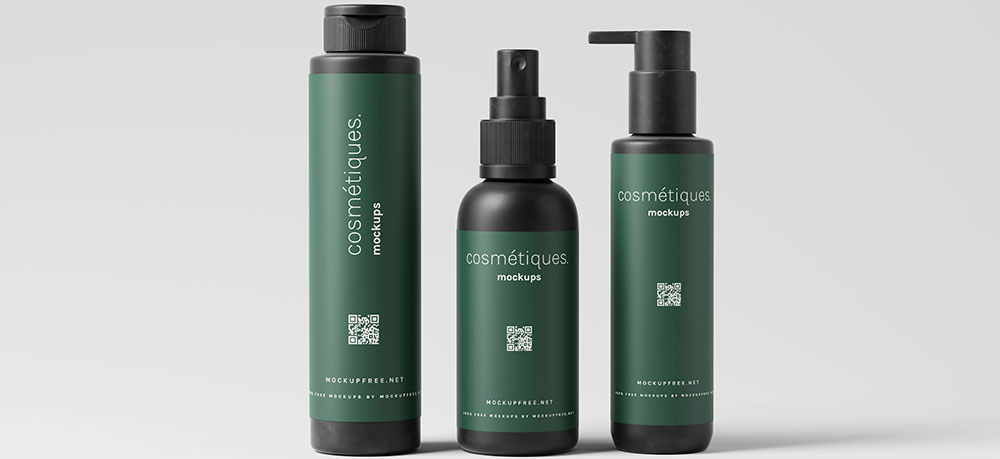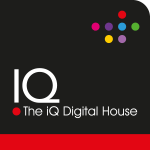How QR Codes Can Help Your Business To Succeed
QR Codes are back with a bang and being used in far more ways than were ever imagined when they first burst onto the scene in 1994. So, what’s changed to make them a “must have” component in advertising, marketing, promotional, and everyday use? And how can businesses harness the benefits available through them to help them succeed?
When the Japanese company Denso-Wave invented Quick Response Codes in 1994, their original purpose was to track parts used in vehicle manufacturing (initially for Toyota). They rapidly evolved into multiple use tools to help consumers and businesses in all sorts of ways, especially once mobile phones incorporated QR Code scanning technology. A couple that stuck in our memories were using QR codes in stores to watch promotional videos on products we wanted to buy and visiting supermarkets to find QR codes for recipes (that included details on which aisles to use to find the ingredients).
Fast forward twenty years or so, and the novelty value of using QR Codes had waned with marketers moving onto the next “new thing”. By 2020, QR Code use had markedly declined…and then the Covid-19 pandemic suddenly changed everything all over again.

The re-emergence of QR Codes was largely driven by the Covid-19 pandemic
The Covid-19 pandemic left businesses having to find creative solutions to connect with customers in a non-contact environment. QR Codes quickly became the “Go To” method to establish and maintain customer contact; they also opened up a new world for promoting, advertising, marketing, and selling goods and services.
Isolated at home, the world’s population reacted so positively to online life that QR Code use skyrocketed across 2020 to 2021. That rate of take-up has continued unabated since then with QR Code technology evolving through the development of Dynamic QR Codes and Branded QR Codes.
Static QR Codes that previously allowed you to watch a simple video about a product are now more likely to be Dynamic QR Codes. This new generation of Dynamic QR Code technology enables you to watch a 4K Ultra High-Definition video, buy the product online, choose your delivery time, leave a testimonial about it, and link the review to your social media channels within a few taps.
Meanwhile, the vendor receives real-time statistical data informing them how many people are interested in each product, what the viewing durations are for each video, how many orders have been placed, which delivery contractor is dealing with each customer, and collecting reviews to use for their marketing purposes (as well as managing stock control and re-ordering the most popular items).
So, what’s the difference between the two types of QR Code?
The first thing you might notice is how they look. If you compare the two types side-by-side you will see that Static QR Codes have a more dense pattern of squares (this is because their destination link is usually longer), whereas Dynamic QR Codes require less squares, which makes them easier to scan (an advantage if they need to be reduced in size when printing onto smaller items or displayed on small screens).
Static QR Codes can be used to provide contact information for customers or direct prospects to a place where they can order a specific product. They enable businesses to advertise a one-time promotional offer, enable the downloading of an App, and are handy for encouraging people to leave reviews, testimonials, or ratings for your services. But…they cannot be changed, tracked, or used for marketing purposes to retarget prospects or customers.
Dynamic QR Codes offer more features and functionality but, as you’d expect, that comes with a higher price tag. The choice mainly depends on how you want to use them.
For instance, they can be useful for adding to printed collateral for trade shows or restaurant menus as the linked landing page or platform can be updated and changed as and when required (so when customers scan the Dynamic QR Code they’ll see the most current offer or menu available, which is particularly useful if your business produces seasonal goods or updated versions of products).
One of the most common uses with Dynamic QR Codes is to link them to product videos. For instance, if you see a store display for an item and would like to find out more about it using the linked video. Other uses that are available through Dynamic QR Codes include being able to conduct customer surveys, provide sign-ups for competitions, and contactless registration for exhibitions, shows, concerts, sporting events, and updates on product information.
It’s fair to say QR Codes have returned with a significant bang and that has made a world of difference for printing companies too, because clients and customers can benefit from them in so many new ways. Here are some of the options we are seeing used by customers and clients:
Marketing campaigns
QR Codes are typically being used in printed advertisements, posters, leaflets, flyers, and brochures to direct users and consumers to specific landing pages on businesses’ websites.
These are then being used to promote special offers, provide more detailed information on the goods or services featured (as well as other goods/services to offer cross-selling opportunities), and direct links to purchase the goods or services involved. That immersive experience and smoothing of the buying process makes it easier to convert enquiries into sales more quickly.

QR Codes for a café placed by a student bike parking area
Product packaging
QR Codes are being used on all sorts of product packaging to provide information for consumers, such as nutritional values, products reviews, and even access to User Guides (many of which include tutorial videos). So, don’t be too keen to throw labelling or packaging in the recycling bin before you check for QR Code links – you might miss out on some handy information and discount offers for other products!

QR Codes on product packaging helps consumers to see important information
Event invitations
For clients that organise events, such as seminars, conferences, and exhibitions, QR Codes are being added to invitations to provide indepth event information, venue maps, floorplans, presentation timetables and speaker profiles, RSVP options, and access to registration platforms (to facilitate seamless booking, alongside upselling opportunities for items such as premium packages for attendees and delegates).
Many of these incorporate access to social media accounts for the event too, so users can use the QR Code to view real-time event updates and promotions (such as discounts and special offers).

QR Codes enhance the user experience at all sorts of events
Business cards
QR Codes can be added to business cards in two formats:
Static Codes can be used to create vCards that contain the main contact details of the card holder, e.g., name, title, company name, phone number and email address, along with their website URL.
Dynamic Codes take things to a different level, providing the same general contact details along with social media profile links and connecting URLs to websites, work portfolios, and company profiles (they can even help staff members to track contacts who have accessed the website via the business card’s Dynamic QR Code). As mentioned above, these require landing pages on a website or suitable platform to support the additional functionality and that comes at an additional cost.
Direct Mail campaigns
QR Codes are commonly being incorporated into campaign letters to provide personalised offers or links to specific landing pages on websites (where recipients can view more information and details about products and services). At iQ Digital House, we can use client spreadsheets to generate QR Codes based on variable data, so each mailing piece can contain a Personal URL (PURL) link to information sources of relevance to each recipient.
QR Codes on Large Format Printed items
Here are some other ideas to help you use QR Codes with Large Format printed collateral (most of which highlight the benefits of using Dynamic QR Codes):
- Add them to window graphics for shop fronts, where they can be accessed 24/7. These are a fantastic way to promote product details and exclusive offers, especially if customers can scan the QR Code on the window graphic and link to a Landing Page containing details about the product, videos, and access online purchasing options.
- They are useful for cafes, restaurants, bistros, and brasseries too, as potential customers can check menus or access special offers to download onto their phones and encourage them to book a table.
- Use them on banners promoting events and festivals to enable people to access more details on the event and book tickets.
- In museums and leisure parks, they can be added to onsite signage to provide links to audio and visual information about exhibits, sculptures, paintings, or rides (you could even include interactive options for younger visitors, such as scavenger hunts or treasure searches).
- For property developments, consider adding them to hoarding boards surrounding the site to encourage prospective homebuyers to access site plans, view floor plans, and take virtual tours of the site and properties available.
Tips for QR Code Users
Consider which type of QR Code is most appropriate for your business requirements, i.e. Static or Dynamic. If you’re not sure, please contact our team and we’ll help with advice.
When using QR Codes in printed collateral, it’s important to make sure they are large enough to be easily scanned (so be careful with Micro QR Codes, as these may not be read by some devices).
Test the QR Codes on different devices to ensure compatibility and check that the Landing Page or content linked to the QR Code is mobile-friendly and optimised to ensure the best user experience.
Lisa Mortimore, Commercial Director at IQ Digital House comments: “QR Codes have really changed the ways print can be used, and not just for businesses and event organisers. Charities can incorporate them in their printed collateral to enable supporters to access information on their causes and make secure donations more quickly. They’re also a fantastic way for businesses to promote their sustainability credentials, as the URL links can include information on carbon offsetting schemes and any other projects they are participating in (such as our Planting Trees initiative with Switch2Zero).”
Find out more
The scope for using QR Codes is so immense that it’s impossible for us to cover everything in just one article. We hope the information above has provided useful ideas for you to use for your business or organisation. If you have any questions, please contact our Commercial Director , Lisa Mortimore, on 01252 796 903 or email [email protected].
Published February 2024
Categories: QR Codes, Graphic Design, Small Format Digital Print, Large Format Digital Print, Storage and Distribution





